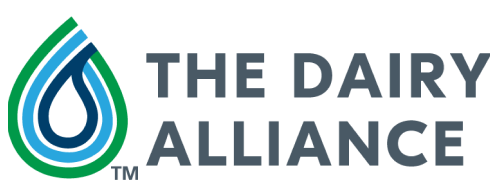See Dairy Differently With the Dorns of Hickory Hill
The dairy industry has committed to significantly reducing its environmental impact. In 2008, U.S. dairy became the first in the food and agriculture sector to conduct a full life-cycle assessment. Results showed that dairy contributes just 2% of all U.S. greenhouse gas emissions, yet the industry seeks to do even better.
The dairy industry aims to achieve a positive environmental footprint as it nourishes Americans through diverse practices, innovative technologies, and solutions. Efforts towards these goals are evident at Hickory Hill Milk in Edgefield, South Carolina. Run by the Dorn family, the farm strives towards sustainable practices that benefit the community.
“I always tell people that farmers are the original environmentalists,” says dairy farmer Watson Dorn. “My grandparents knew if they didn’t take care of that soil, the soil wouldn’t take care of them. It’s like my cows. If I don’t take care of my cows, they are not going to take care of me. That cow comes first.”
As Watson says, dairy farmers are good stewards of the environment. Dairy is not a major contributor of greenhouse gas emissions, but it can be a solution. Farms across the Southeast are utilizing technology, regenerative practices, and best management practices to preserve natural resources in their local communities.
“Sustainability is a big deal for us. It not only is good for the environment, but it is also good for our bottom dollar,” says son Daniel Dorn.
Like other goals on the farm, sustainability impacts the entire operation. Sustainability has a variety of meanings depending on who you are speaking to. Dairy farms support rural America, but economic sustainability is something dairy farmers know all too well, too. Whatever is implemented for sustainability should not negatively impact the dairy farm or local community. There are several ways farmers implement beneficial changes.
Farmers are investing in technology on their farms for a better quality of life for employees and animals. Advancements in technology have improved efficiency on the farm and reduced the footprint of a glass of milk. Robotic milkers are new technology farmers are adopting in response to a labor shortage and need for skilled workers. Hickory Hill milks 137 cows on these milkers. The fourth-generation dairy farm uses two robots and then bottles its own milk on the farm. This is just one of the many technologies farmers invest in to keep their cows comfortable.
Improvements in genetics and cow comfort are the management practices that have increased the farm’s overall milk production resulting in reduced emissions per gallon of milk. Improved technology has played a major role in management decisions throughout the practice.
Data is improving how the farm manages cows and provides the best care, too. Tracking data means farmers can usually detect issues with a cow through data before visually seeing an issue.
Another method for improving efficiency is the recycling of resources. The Dorns and other dairy farming families recycle sand for the bedding, water for drinking, milk cooling, equipment cleaning, and then irrigation. How? The flush system built in the freestall barns housing the cows helps collect enriched water and manure to irrigate and fertilize farmland and collect loose sand to clean and reintroduce as bedding.
Families like the Dorns want to ensure the farm is around for the next generation. These farming families strive to be good neighbors and support their local communities, and they want to share their learning across the industry. Hickory Hill shares its successful methods, hosting over 100 dairy farmers from across the country to see the operation and replicate it in their own area. The efforts of the Dorns and other dairy farm families mean we can all benefit from the hard work of dairy farmers producing fresh milk.
To learn more about sustainability efforts on dairy farms, visit our Sustainability and the Dairy Industry section. This article is part of an ongoing video series. Follow along on our social media channels as we talk to Southeast dairy farmers about their work.



